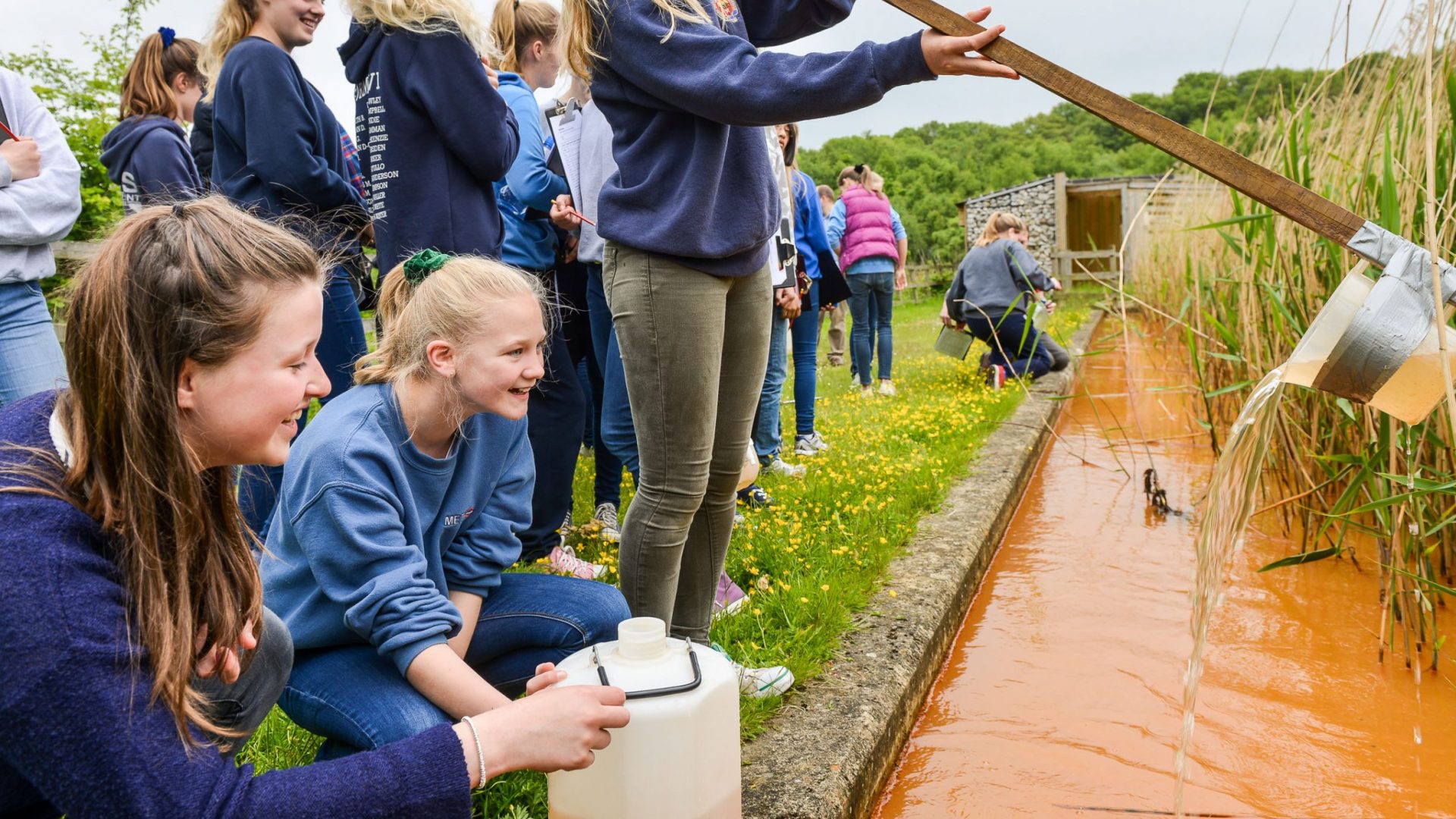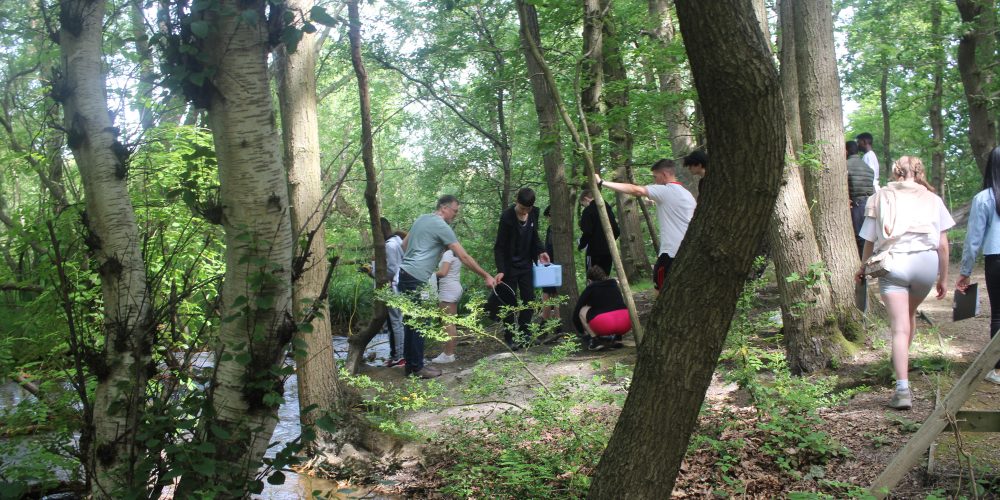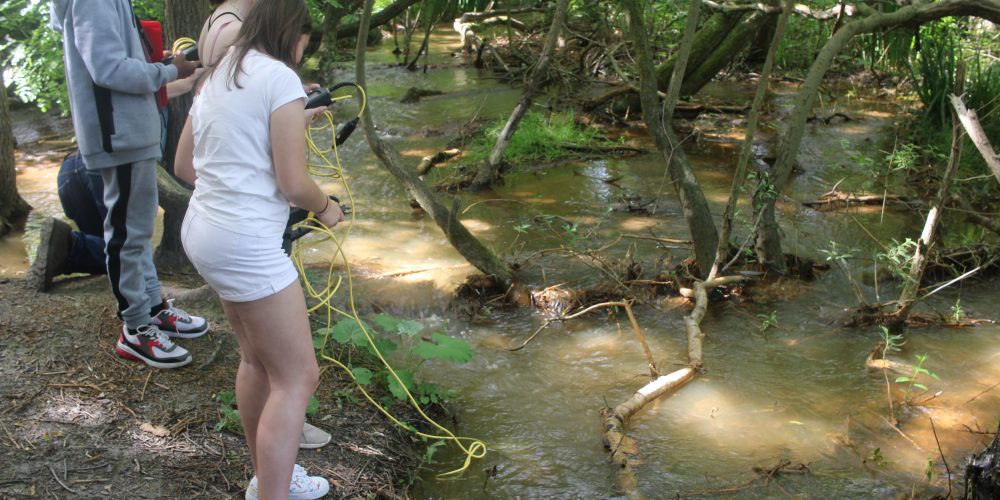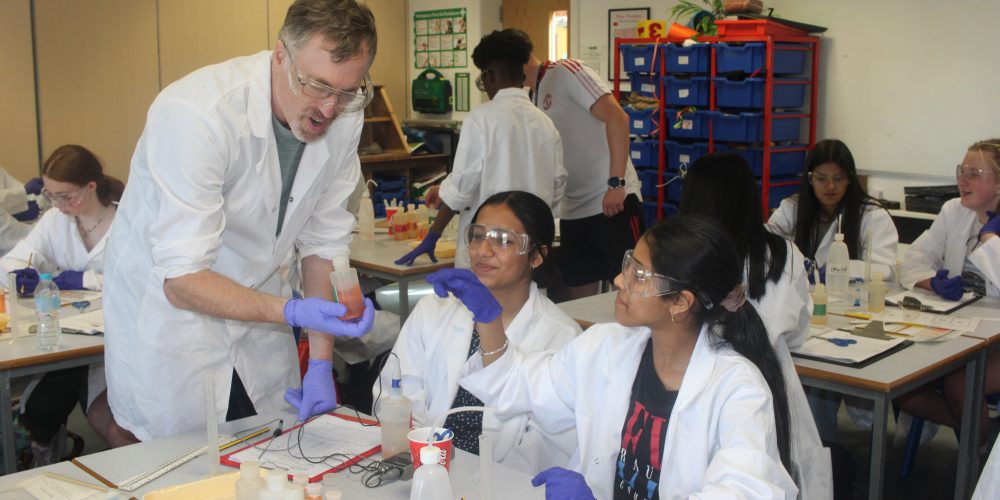
What’s in our Water?
Basic Information
This session, led by a science specialist, combines a guided tour of the Museum’s mine water treatment plant, experiments in the field, a practical session in the classroom and an Underground Tour.
Breakdown of session
The day begins with an introductory session about the issue of minewater led by Dr Jeremy Hopwood from Huddersfield University and a member of Museum staff.
Following this the group will walk to the minewater treatment plant (5-10 min walk from the main visitor centre). Samples of mine water will be taken at 5 different locations along the water treatment process, as part of the guided tour:
A – Mine water from pipe
B – Inflow to reed bed 1
C – Halfway point along reed bed 1
D – Discharge into stream
E – Further down stream
The following field experiments will be carried out by pupils at each location:
- Oxygen
- Turbidity
- Temperature
After a short walk back to the classroom, pupils will carry out chemical tests on the water samples. They will be testing for the following:
- Iron concentration
- pH
Pupils will use colour charts to determine levels of iron, and pH meters to measure the acidity of each water sample.
After lunch each group will take an Underground Tour.
How can group leaders help?
It would be helpful if group leaders could encourage pupils to take part in the field experiments, support them with the chemical tests and to ask and answer questions. Your enthusiasm and participation is appreciated.
Learning Outcomes
Pupils will:
- Follow standard procedures and use new scientific equipment
- Carry out titrations
- Prepare solutions of specified concentrations
- Carry out qualitative and quantative chemical tests using reagents to measure the levels of iron, ammonia and phosphate at different points of the water treatment plant
- Carry out calculations to determine the concentration of chemicals in solution
- Obtain, record and begin to analyse scientific data.
Links to curriculum
Science
- Chemistry (Chemical reactions)
- Coal mining and the environment
- Water testing
Other places to visit on site:
Mining Lives Gallery: Find out how miners spent their leisure time, dress up in mining clothes and look out for the coal delivery wagon, which would have been a common sight in mining villages.
The Pit Head Baths are an original pit building dating back to 1938, where miners showered at the end of a shift. Before they were built (with funding from the Miner’s Welfare Fund) miners had to wash at home, usually in a tin bath with water heated on a coal-fired range.
Technology Gallery: Find out about the problems that miners faced underground, the tools they used and how men and coal were transported.
Victorian Gallery: Find out about the jobs that children did underground in the 19th Century.
Pony Discovery Centre: Meet our ponies to find out what important jobs pit ponies did and what their life was like underground.
Suggested Pre Visit Activities
- Find out what coal is and what is was used for?
- Think about how coal mining affected the environment and how it has left its mark
- You could watch this short film, which introduces our water treatment plant:
The Water Treatment Facility
Water samples will be taken away for analysis by you in the laboratory. You will also perform several tests on these samples whilst in the field.
You can also use our downloadable resources to aid your pupils learning before and after your visit.
Email our Bookings Assistant, Sharon, on bookings.assistant@ncm.org.uk to enquire.


